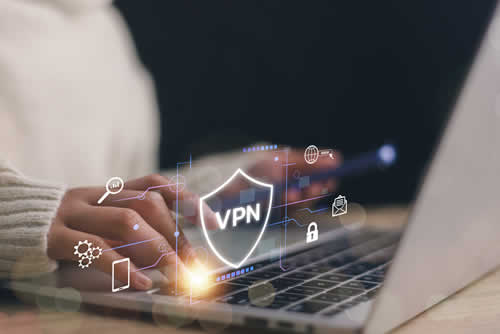Securing Virtual Classrooms: The Critical Role of VPNs in Remote Education
Remote education has reshaped learning now. It presents a blend of opportunities and challenges. As the world’s into virtual classrooms, the importance of cybersecurity rises. For a safe and effective online learning environment, Virtual Private Networks (VPNs) are used to boost the internet.
Introduction to Cybersecurity in Education
With the rise of remote learning, internet connectivity has become the backbone of education. The necessity of a safe digital space for students and educators is paramount, emphasizing the critical role of research for development in ensuring secure online environments for learning.
VPNs aren't just add-ons; they're fundamental security features that safeguard sensitive information during an internet session, ensuring both teachers and students can focus on education without the fear of digital threats looming over their heads.
Demystifying VPNs: Guardians of the Digital Classroom
Not everyone might be familiar with the term VPN, which stands for Virtual Private Network. Essentially, it's a service that creates a private, encrypted tunnel for your internet connection, shielding users from potential cyber threats.

Consider the risks associated with accessing unsecured public Wi-Fi networks. Without protection, sensitive data is exposed, making it easy prey for cyber adversaries. The mechanism of a VPN is straightforward: it encrypts your internet connection and hides your digital identity, rendering you virtually invisible to potential attackers. To safeguard your online activities, you can visit VPN27.com to learn more about secure VPN solutions.
VPNs: Enhancing Safety and Access in Remote Learning
As educational institutions pivot towards technology-driven learning, the role of VPNs in virtual classrooms becomes increasingly significant.
Defending Against Digital Predators
In remote learning, connecting to the internet also means potentially exposing oneself to an array of cyber threats. Whether it’s students attending a lecture or tutors delivering one, an unprotected connection is akin to leaving the digital door wide open for any cybercriminal to enter.
A VPN acts as a robust barrier, cloaking data transmissions and deterring unauthorized tracking or tracing of digital activities.
A Scenario of Safety
Imagine two children en route to school: one walks alone and encounters danger; the other travels in the safety of a group or with a guardian and remains unharmed. In the digital world, using a VPN is akin to the latter scenario; it’s about safeguarding one's journey within the virtual corridors of Learning and Education.
Encouraging Anonymity
To be unknown is to be safe in cyberspace. Anonymity thwarts attackers who rely on identifiable information to execute their schemes. A VPN conceals your digital identity, symbolized by your IP address, rendering you a ghost amid the vast internet landscape, elusive to cyber threats.
Streamlining Connectivity
A VPN transcends its role as a security apparatus and improves your internet experience. Internet Service Providers (ISPs) might throttle bandwidth, leading to lags and buffering, especially during data-heavy activities such as video conferencing.
By encrypting your data and channeling it through its servers, a VPN not only secures but also speeds up your connection, ensuring a smooth virtual learning experience without interruptions.
Choosing the Right VPN For Remote Education
When it comes to selecting a VPN service, educators and students alike should opt for reliable and reputable providers. An effective VPN for remote learning comes with a clear privacy policy, promising no logs of user activity.
It should balance robust security with high-speed connections to accommodate seamless video streaming and data transfer necessary for interactive learning. To learn more about this topic, just go to VPN27.com now!